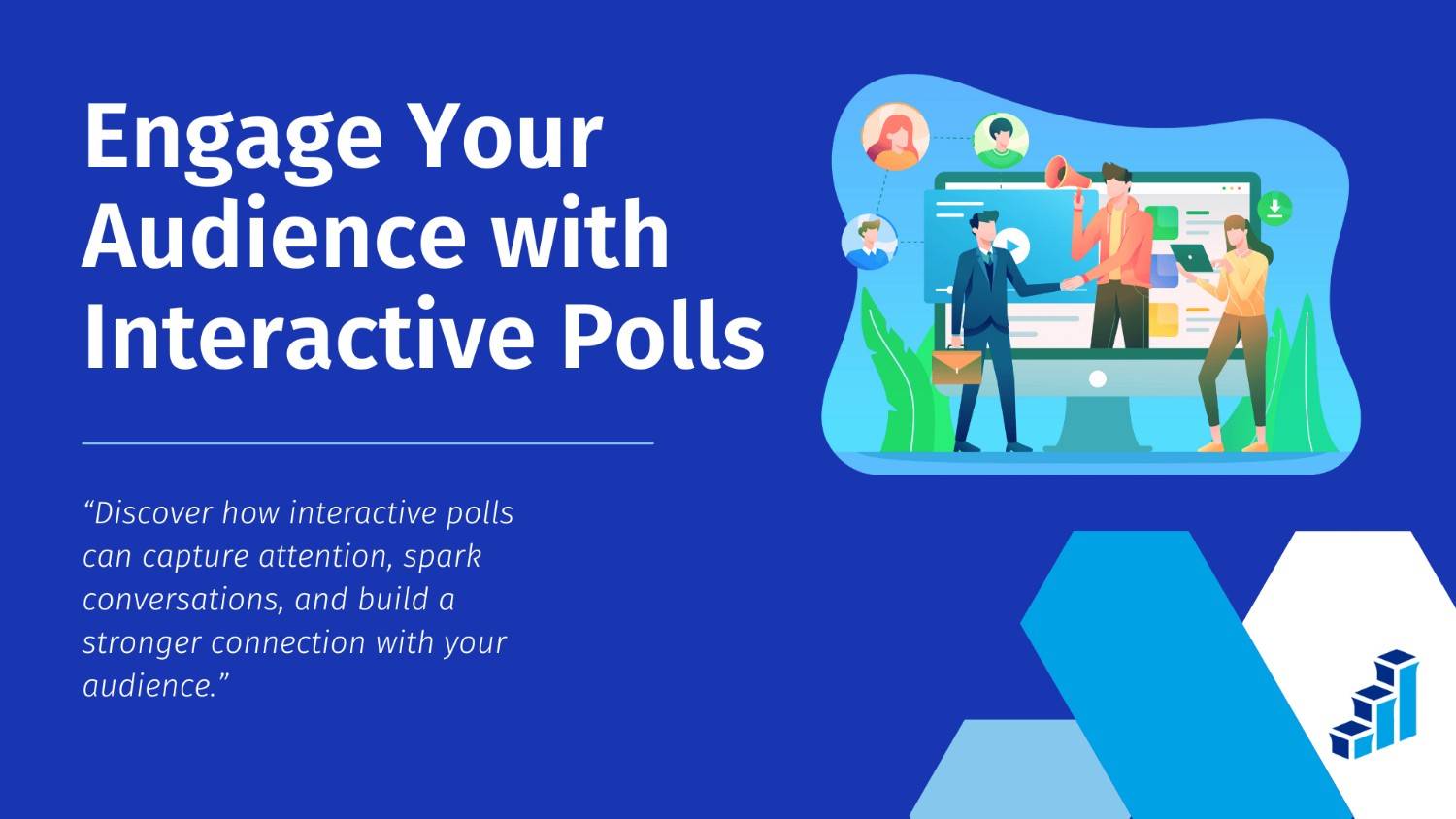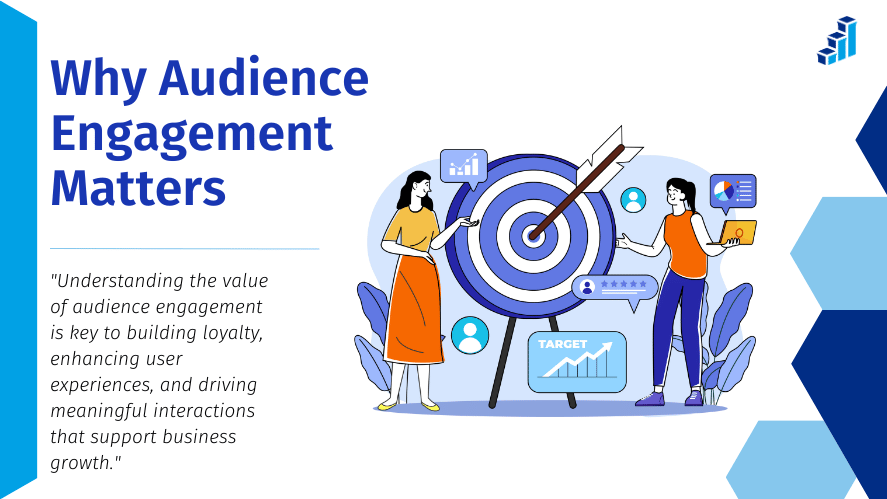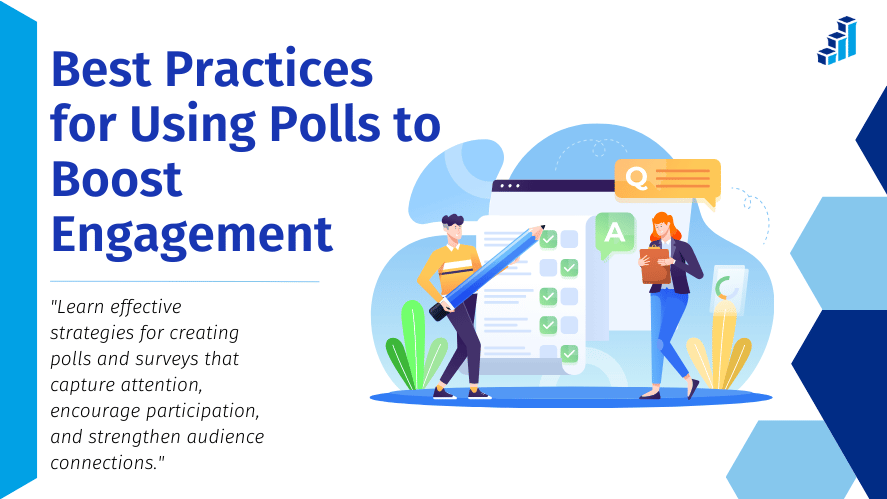
How Interactive Polls and Surveys Boost Audience Engagement
In today’s digital world, getting and keeping people’s attention is harder than ever. Businesses, bloggers, and content creators need creative ways to make their audiences feel involved. One powerful way to do this is by using interactive polls and surveys. These tools don’t just gather data; they give people a way to participate and share their opinions, making them feel connected and valued.
This article will explain why audience engagement matters, how interactive polls and surveys can help, and the best ways to use these tools. We’ll also look at some examples of brands that successfully use polls to connect with their audiences.
Why Audience Engagement Matters

Before diving into polls and surveys, it’s helpful to understand why engagement is so important. Audience engagement is about how much people interact with your brand or content. Engaged audiences are more likely to be loyal, return frequently, spend more time on your site, and even tell others about you. Here are some key reasons why audience engagement is valuable:
- Loyalty: When people feel involved with your brand, they’re more likely to become repeat customers.
- Better Experience: Interactive content, like polls and surveys, shows that you value your audience’s opinions, making their experience more enjoyable.
- More Time on Your Site: Engaged users tend to stick around longer, which can boost your rankings on search engines.
- Higher Conversions: Engaged audiences are more likely to take action, whether it’s signing up, making a purchase, or sharing your content.
- SEO Benefits: Search engines reward websites that keep users interested. When people stay longer and interact more, it can improve your search ranking.
Audience engagement is directly linked to business success. When people feel like they matter to a brand, they’re more likely to come back and make purchases, which helps drive growth.
The Power of Interactive Polls and Surveys
Polls and surveys are especially effective at boosting engagement because they invite people to take part rather than just watch or read. Here are some ways that polls and surveys can improve engagement:
Real-Time Feedback
Polls let you get feedback right away. Whether you want to know your customers’ favorite product, get opinions on a new idea, or learn more about your audience, polls give you instant insights. This makes people feel involved because their input matters and can influence decisions.
For example, a clothing brand could run a quick poll asking customers which color they’d prefer for a new product. By adjusting their choices based on the feedback, the brand shows customers that their opinions count.
Personalized Experiences
Polls and surveys can help you learn what your audience likes, which allows you to tailor your content or products. When people feel like your offerings are customized to their needs, they’re more likely to keep coming back.
For instance, a streaming service might ask viewers what types of shows they enjoy. By suggesting shows based on these preferences, they create a personalized experience that keeps viewers engaged.
Higher Participation Rates
Interactive content like polls often gets more responses than static content. People are more likely to answer a quick poll than read a long article or fill out a detailed survey. Polls are especially popular on social media, where users prefer quick, easy interactions.
Simple polls are a low-effort way for people to interact with your brand. For example, a one-question poll on Instagram or Twitter can easily attract responses, making it a great way to gather quick insights and keep people interested.
Best Practices for Using Polls and Surveys to Boost Engagement

To make your polls and surveys as effective as possible, here are some best practices:
Ask Clear, Simple Questions
Make sure your questions are relevant and easy to understand. Avoid using too many questions or asking things that are too complex. For example, a coffee shop might ask, “How do you take your coffee?” rather than asking detailed questions about brewing methods. The simpler the question, the more likely people are to answer.
Keep It Short and Sweet
The easier your poll is to complete, the more responses you’ll get. Long or complicated polls can be intimidating and cause people to drop off. Stick to one or two simple questions, and avoid using language that might be confusing. This will make it easier for people to engage, especially on social media.
Place Polls in High-Traffic Areas
Where you put your poll matters. Think about where your audience is most active and place your poll there. Some good places to add polls include:
- Landing Pages: Engage visitors right when they arrive on your site.
- Blog Posts: Add polls within articles to get readers’ opinions.
- Email Newsletters: Include short polls to get feedback from subscribers.
- Social Media: Use polls on Instagram Stories, Twitter, and Facebook to reach a wide audience.
Offer Small Rewards
Offering a small incentive can increase participation. Rewards like discounts, free trials, or entries into a giveaway can motivate people to take your survey or answer your poll. When there’s something in it for them, they’re more likely to participate.
For instance, an online store could offer a 10% discount in exchange for completing a customer satisfaction survey. This benefits both sides: the business gets useful insights, and the customer gets a reward.
Using Poll Results to Build Stronger Connections
Your engagement doesn’t have to end once people answer your poll. There are several ways to use the results to build a stronger relationship with your audience.
Share the Results
Sharing poll results with your audience can create a sense of community and transparency. When people see the results, it makes them feel like they’re part of a group, which encourages further interaction.
For example, a food blog could run a poll asking readers to choose their favorite recipe types and then share the results in a blog post, saying, “Based on your votes, we’ll be sharing more dessert recipes!”
Act on Feedback
One of the best ways to show that you’re listening is by making changes based on user feedback. When people see that their input leads to real changes, it strengthens their connection to your brand and encourages them to keep engaging.
Create Follow-Up Content
Use poll results to inspire future content. For example, if a poll shows that your readers are interested in a particular topic, create a series of articles on that theme. This targeted approach shows you’re paying attention to their interests, which keeps them coming back.
Case Studies and Examples
Polling.com’s Interactive Surveys
Polling.com offers easy-to-use tools that help businesses connect with their audiences through polls and surveys. One feature that makes Polling.com unique is its real-time analytics, which let businesses see responses as they come in. This feature allows for quick adjustments, making the platform especially useful for social media polls and time-sensitive surveys.
Brands That Use Polls for Engagement
Here are some brands and influencers that use polls effectively to engage their audiences:
- Starbucks: Starbucks uses Instagram polls to let customers vote on favorite drinks or seasonal flavors, keeping their audience involved in product choices.
- BuzzFeed: BuzzFeed is known for fun, interactive quizzes and polls that create a sense of community and give readers a way to express themselves.
- Spotify: Spotify uses social media polls to get feedback on listeners’ music tastes. This helps them create popular playlists and build a loyal fan base.
These examples show how brands use interactive polls to learn more about their audiences, make people feel involved, and encourage more interaction.
Conclusion
Interactive polls and surveys are powerful tools for connecting with your audience. They provide real-time feedback, create personalized experiences, and usually generate more engagement than regular content. When used well, polls can help build stronger relationships with your audience, keep people interested, and even help you gather useful insights.
If you’re ready to use polls to grow your audience engagement, Polling.com offers easy-to-use tools to help you create interactive, data-driven content. Whether you’re a small business, a blogger, or a large company, using polls can help you connect with your audience and drive results.
Ready to get started? Try Polling.com’s tools today and see how interactive polls can make a difference for your brand.
